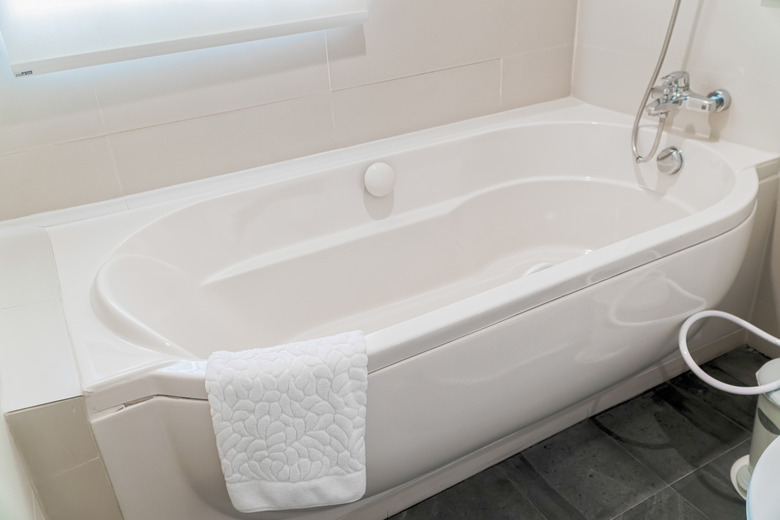Differences Between Fiberglass And Porcelain Tubs
There are several key differences between porcelain and fiberglass bathtubs, and understanding these differences can help inform your choice between the two. More and more homeowners are opting for fiberglass alternatives to the heavy, expensive ceramic-covered metal tubs of years past.
Fiberglass tubs are lighter and generally much less expensive than porcelain. Additionally, fiberglass allows for molded shapes that can be much more decorative and intricate than porcelain and iron alternatives.
Differences in Price
Differences in Price
Fiberglass tubs are typically less than half the cost of their porcelain counterparts. This has to do with the way that fiberglass tubs are manufactured. Molded fiberglass products are more easily mass-produced than iron and porcelain tubs.
Factories can turn out dozens of lightweight fiberglass tubs in the time it takes a porcelain-on-iron traditional tub to be manufactured. Additionally, the lightness and stackability of fiberglass tubs allow for reduced shipping costs.
Differences in Appearance
Differences in Appearance
Porcelain tubs have a lustrous sheen to them, one that's relatively easy to keep up with the right care. Many people love that sleek, glossy look for their bathrooms. Fiberglass can start with that shine, but it's more prone to discoloration, scratching and dullness over time.
However, fiberglass is a much more moldable material than porcelain, meaning it's easier for manufacturers to fit fiberglass into all kinds of different designs. So, if the shape or decoration of the tub is important to you, you'll likely find far more design options in fiberglass than you will with porcelain.
Differences in Installation
Differences in Installation
A key difference between porcelain and fiberglass tubs is apparent in the installation process. Porcelain tubs are porcelain-coated iron; consequently they are heavy and cumbersome to maneuver in what may be a tight space. The installation of a porcelain tub generally involves the removal of the toilet and any sinks or vanities located between the bathroom door and the tub's installation site. With fiberglass, the tubs' relative lightness can allow for more manipulation and lifting around or over fixtures already in place in a bathroom.
Differences in Cleaning
Differences in Cleaning
One area where fiberglass tubs do not shine as brightly, literally and figuratively, over their traditional porcelain counterparts is in maintenance. Porcelain tubs hold up well over time, and can be cleaned with relatively harsh chemicals without much risk of stripping the porcelain from the iron.
Fiberglass tubs, however, have a laundry list of chemicals, such as bleach, that are not safe to be used on their surface. They are also more susceptible to scratching with abrasive scrubbing, and consequently can be more troublesome to keep clean.
Differences in Maintenance
Differences in Maintenance
Traditional porcelain tubs are actually porcelain-coated iron, and as you know, iron rusts. Keeping the underside of a tub dry, where there is no porcelain coating, is key to maintaining a traditional porcelain tub.
Once rust takes hold, it is only a matter of time before the unit must be replaced, as no amount of grinding or sandblasting will completely remove the cancer from the metal. Fiberglass tubs, on the other hand, are more forgiving when it comes to exposure to dampness and holding up after a leak.
Differences in Longevity
Differences in Longevity
Longevity is another key difference between the two types of tubs. Like other lightweight materials, fiberglass can be rather brittle and porous. That porosity makes it susceptible to absorbing water over time, which makes cleaning more difficult and can eventually lead to wood rot or warping in the materials beneath the tub.
Over time, fiberglass is also more susceptible to scratching, discoloration and cracking than porcelain. With heavy use, some fiberglass tubs won't last longer than a dozen years. Fiberglass covered with an acrylic coating can hold up better against this wear and tear, although this will also up the cost of your tub.
Porcelain isn't prone to that level of scratching, but it does not hold up well against heavy impact. Be careful when carrying heavy objects near a porcelain tub, as it can chip easily.
